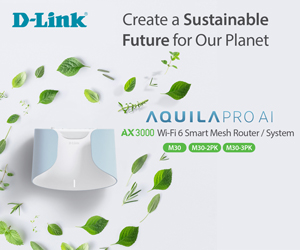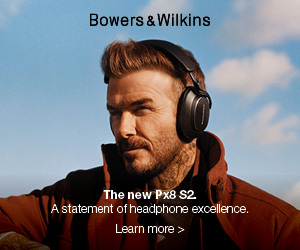The Q1 2024 smartphone market share shows Apple relegated to #2, with Samsung taking the top spot again. Of course, global market share means less to Australians, as two of the top five brands, Xiaomi and Transsion, don’t sell here.
Apple in global strife
Apple’s share in the world’s biggest smartphone market fell to 15.7% in the first quarter from 19.7% a year earlier. That put it almost level with Huawei, which saw sales jump 70%, according to research firm Counterpoint
Apple lost badly in Q1 24, with a 9.6% loss year-over-year (YoY). That, more than Samsung doing well (its YoY was down .7%), kept Samsung on top. There is a lot more to this.
Apple has been badly affected by the Chinese decision not to allow its use in government or state-controlled enterprises. Read Apple is banned in China – is it, though? Local manufacturers are voraciously eating Apple’s Chinese market share and will continue as the Made In China 2025 policy is enforced. Read Made in China 2025 – a policy with intended consequences.
Apple has also bent over backwards to accede to the Chinese Government’s request to remove any anti-China apps from its Chinese App store. The Chinese government forced Apple to remove four apps from the App Store: Signal, Telegram, WhatsApp, and Threads.
Apple responded, “We are obligated to follow the laws in the countries where we operate, even when we disagree,” says Apple. The Cyberspace Administration of China ordered the removal of these apps from the China storefront based on their national security concerns”.
Analysts responded (paraphrased), ‘Apple shot itself in the foot with its ‘walled garden’. Prioritising profits (to keep selling in China) over freedom for users (removing apps and who knows what else) is not a good long-term strategy. iPhone market share in China will keep shrinking and local heroes like Xiaomi, vivo, OPPO, Huawei, and Honour will reap the rewards.’
In another blow, South Korea’s military is considering a complete ban on iPhones from 1 June over security concerns. The ban could impact 500,000 users. We understand that there are concerns over call-recording apps
Q1 2024 smartphone market share
The IDC Tracker shows shipped phones.

OPPO branded phones did very well globally, coming in at #5 with 8.7% of the market. If you added its other BBK-owned brands, including Vivo, realme and iQ, it would have a 17% market share behind Samsung at 23.85%.
Comment on Q1 2024 smartphone market
2024 is the year of AI-washing, yet another marketing term to try to differentiate one band or model from another. AI is presently quite limited to a few photography tricks and searches, and none have true AI. It will be a few years yet before the processor and memory technology allow a significant amount of on-device processing. Read What is Samsung Galaxy S24-series AI all about?
Below are two different company research reports and on the whole are fairly similar.


Missing from the top 5
Motorola.
Despite Lenovo tipping in buckets of money to get to #1 and making some damned fine phones, it is not gaining traction either in China or many Western markets.
If we look at the USA (March 2024) Apple has 59.04% and Samsung has 23.36% leaving slim pickings. Motorola is next with about 3.98%, Google Pixel at 2.57% and OnePlus (OPPO US brand) at .67%.
Australia is similar (March 2024): Apple is at 57.89%, Samsung 26.1%, Google Pixel 4.67%, OPPO 2.68%, Motorola 1.07%, and Vivo .38%. (Source Statistica).
Nokia
It seems to have disappeared from the radar, along with the remaining 10% is for Telco and other obscure brands.
Why
Samsung is seen as a safe non-Chinese brand. It offers a range of A and S series phones and the Galaxy Z Fold/Flip, catering to the whole market. Samsung is becoming more ‘Applesque’ by the day, charging premium prices and building an ecosystem that, like Apple, will be harder to escape.
OPPO Australia has been hamstrung by enormous carrier certification costs and supply issues as it struggles to fill demand in bigger Asian markets. Its last flagship here was the Find X5 Pro, whereas China has the spectacular Find X7 Ultra. It survives on its value-driven entry-level and mid-range A-series and Reno IIF as a mid-range phone.
Motorola is a conundrum. Its handsets are excellent value, well made, many are class-leading, and it has decent marketing budgets. Yet we have only seen one of the 2023 Motorola Edge 40 series and none of the 2024 Motorola Edge 50 series. At least we see some of its 2024 Moto g 4 series (04, 24, 34, and 84).
Nokia has almost disappeared here at <1%, partly due to HMD licensing of the brand (ending in 2026) and introducing its HMD-branded feature phones. My call – it has gone too far to be a significant brand in this market.
Grey Market
The grey market thrives because purchasers are ignorant of the issues and desire to get a bargain. While we can warn readers of the issue—read Don’t buy a grey market smartphone (updated guide) online markets are thriving.
Critical issues with grey market:
- It generally will not work on Australian 5G networks (it will connect to 4G). Australian Telcos require specific commands and metadata to make or receive phone calls.
- May not hand off the other towers on the move, causing signal loss.
- No manufacturers’ Australian warranty – you rely on the online vendor, and most require you to ship it back to China.
- Different modem specifications, especially for Wi-Fi 6, 6E and 7, are illegal here (ACMA only allocates portions of the spectrum).
- No over-the-air (firmware) updates. These are country-specific and are often tied to the IMEI number.
- Won’t make a 000 emergency call (set for 911 or other emergency network)
- Won’t receive SMS, MMS, etc. (They will receive the newer RCS text and multimedia).
- Chargers are not RCM C-Tick approved.
Refurbished and second-hand phones
Our strong advice is that you are buying other people’s troubles. Read Buying a second-hand or refurbished phone. Bargain or another person’s problem
This market will improve now that Samsung, Google, Apple, OPPO, Motorola, and others have increased their support—some with up to seven OS updates.

But for now, every refurbished or second-hand phone has no future upgrade or security patch path. Any phone over three years old is nearing the end of life, with battery life most affected.
If you must buy a phone, get one less than two years old and check its Australian RCM C-Tick Status under System, Regulatory Information.









Comments